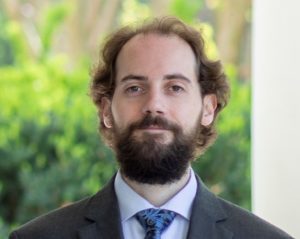
Question 1 is a needed investment in education and equity
Without question, the COVID-19 pandemic has put additional strain on American families, the American economy and American public institutions with no clear end in sight.
As the fabric of public life is stretched and tested by rapidly changing circumstances, it becomes ever more apparent where gaps are present and need to be filled. In the case of classroom teachers, filling gaps has meant adapting to remote learning by preparing new curriculum and providing alternative assignments, offering adaptive feedback and providing for social-emotional learning of students in new ways, through modular, sequential, synchronous and asynchronous means.

Hennessey
For other school staff members, filling the gaps has meant finding new ways to provide one-on-one support to vulnerable students, delivering food and other necessary supplies to needy families, and navigating all of the above while supporting their own families and children as well. The truisms, “Necessity is the mother of invention,” and, “We’re all in this together” ring even truer in challenging times.
A related gap in the fabric that has been persistent in rural America — and is especially apparent for rural students at the moment — is the challenge of inequitable broadband internet access.
As noted by U.S. Sens. Susan Collins and Joe Manchin, D-West Virginia, in April broadband internet infrastructure in rural areas lagged behind the urban areas.
In Piscataquis County, where I live and teach, some of my students are unable to access the internet from home at all, and many more are subject to “service deserts” where there are few providers, sporadic installations and intermittent signals.
The Federal Communications Commission recommends 12 to 25 megabits per second of bandwidth for “moderate use” (i.e., two or more devices at a time). The reality in Maine is that many parts of our rural counties are not able to access 7 megabits per second, the bare minimum to qualify for “broadband” status. When children are attempting to do schoolwork in the home while adults also need internet access, the current bandwidth and infrastructure does not match the need; the current tool does not match the task.
In effect, broadband internet access is a large component of the foundation necessary for 21st education.
To prepare students for the critical thinking and communication skills necessary to contribute to a technology-driven economy, regular access and practice will be key to fluency. And, while remote learning can never fully compensate for the experiences of in-person instruction in most cases, rural K-12 students deserve equitable educational opportunities to those who live in more populated areas, especially in times of crisis. Moreover, the continuing education of Maine’s young adults and the advancement of Maine’s mid-career professionals will be increasingly predicated upon having regular internet access and fluency.
Question 1 on the July 14 statewide ballot will help to address this current gap and help to position us for the future. If approved, the measure will provide $15 million in state funds to be matched by $30 million from the private sector, local entities and federal funds, and is specifically targeted to increase broadband internet access in “unserved and underserved areas.”
It is a deliberate investment in our immediate needs and long-term goals as a state. Question 1 will help to broaden infrastructure, increase awareness of shortage areas, and hopefully lead to further additional investment over time.
The COVID-19 era is temporary, but it has raised legitimate areas of concern for our social fabric. While I sincerely hope to be in the classroom as planned in the fall, prolonged remote learning is a contingency that we all must plan for.
We cannot afford to have unnecessary disruptions to any person’s education, and limited access to learning due to a lack of physical infrastructure does not serve any of us, whether we are retirees, workers, teachers, concerned citizens or students.
I hope that you will join me in voting “Yes” on Question 1 on July 14 in the spirit of equity and investment in rural Maine and its students.
Joe Hennessey teaches English at Piscataquis Community High School in Guilford and is the 2018 Piscataquis County Teacher of the Year, the 2019 Maine Teacher of the Year and 2020 Maine Sanford Teacher Awardee.